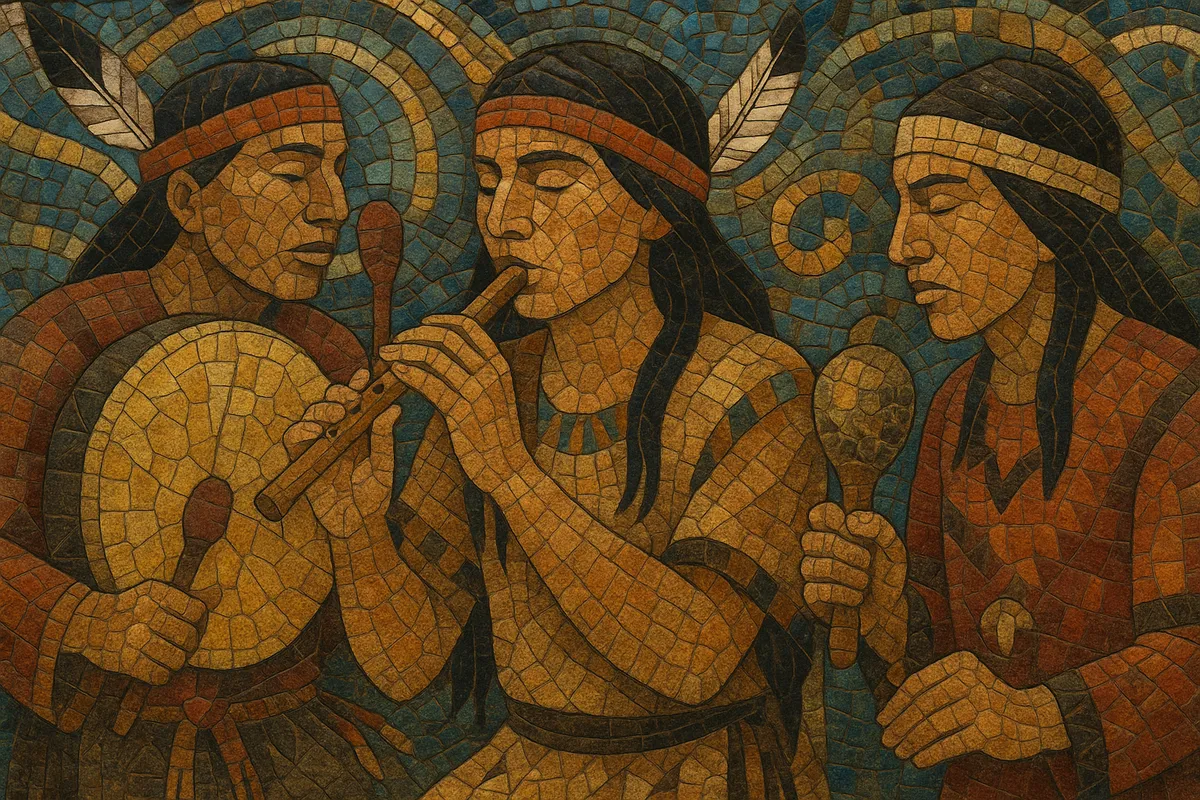
Indigenous North American music encompasses the diverse musical practices of Native American, First Nations, Inuit, and Métis peoples across what is now the United States and Canada. It predates European contact by millennia, and is rooted in ceremonial, social, and storytelling functions rather than commercial or entertainment-only aims.
Across regions, performance practices differ markedly: Plains powwow songs feature high-pitched leads, vocables, terraced melodic descent, honor beats, and the "incomplete repetition" form; Eastern Woodlands styles favor call-and-response and antiphonal textures; the Arctic is renowned for Inuit katajjaq (throat singing) and game songs; the Southwest (Pueblo, Navajo/Diné, Apache) includes complex ceremonial repertoires with water drums and rattle accompaniment; and the Northwest Coast employs box and log drums with intricate dance/song cycles. While typically monophonic, the music often layers voices and percussion in a rich heterophony.
Instrumentation centers on large powwow drums, frame and hand drums, water drums, rattles (gourd, turtle shell), whistles, and Native flutes, with voices as the primary vehicle for melody, language, and vocables. Songs carry cultural knowledge, spiritual meaning, and social cohesion, and are performed with strict attention to context, protocol, and community ownership.
Indigenous North American music emerged long before written history as an integral part of ceremony, subsistence cycles, healing, social gatherings, and oral tradition. Regional styles diversified alongside languages and lifeways: Plains intertribal forms, Eastern Woodlands call‑and‑response, Pueblo and Navajo ceremonial cycles, Arctic game songs and katajjaq, and Northwest Coast potlatch song traditions. Instruments—powwow and frame drums, rattles, flutes, whistles, and box/log drums—were crafted from local materials and embedded with spiritual meaning.
European colonization brought suppression of ceremonies and boarding‑school bans on Indigenous languages and music. Despite this, communities continued to safeguard repertoires. Syncretic practices emerged, such as peyote songs (Native American Church) employing water drums and vocables, and, in some areas, hymn singing translated into Indigenous languages. Regional intertribal gatherings catalyzed powwow culture, which helped standardize and share Plains song forms across nations.
Ethnomusicologists recorded songs (often imperfectly and without full consent), preserving valuable yet partial archives. Mid‑late century saw public revivals and new advocates: powwows flourished; Native flute music reached wider audiences; and artists like Buffy Sainte‑Marie and Joanne Shenandoah brought Indigenous perspectives onto global stages. Institutional awards and festivals began to recognize Native categories, while community control over archives and cultural protocols increased.
Today, traditional ensembles (Northern Cree, Black Lodge, Young Spirit) sustain ceremonial and social repertoires. Artists like R. Carlos Nakai and Mary Youngblood popularize Native flute in concert and healing contexts. Inuit artists such as Tanya Tagaq reimagine throat singing in contemporary art music. Producers like The Halluci Nation (A Tribe Called Red) blend powwow drums and chants with electronic dance music, foregrounding Indigenous identity and sovereignty. Community‑led archives, language revitalization, and cultural education ensure continuity while supporting respectful innovation.

